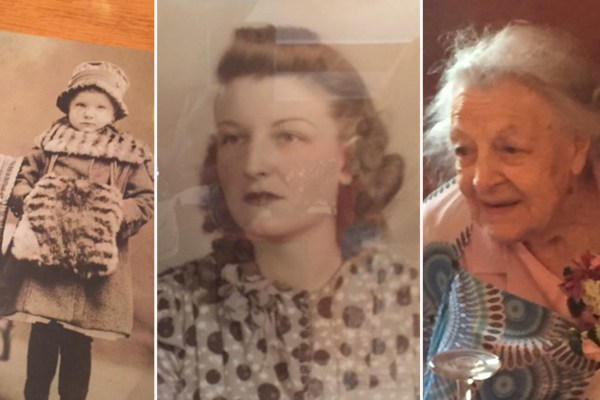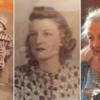Just a few days ago, I had the pleasure of touring Stencil Ease, the country's largest manufacturer of household and industrial stencils. Conveniently for me, it's located in Old Saybrook, Connecticut which is mere minutes from my family homestead in Guilford, where I was visiting to celebrate my grandmother's 100th birthday last week. (My apologies in advance: I only had my cell phone with me, so some of what you are about to see is dark and blurry!)
Stencil Ease headquarters in Old Saybrook, Connecticut, USA.
So what brought me to Stencil Ease? Good question! In addition to the occasion of Gramma's birthday planting me in their neighborhood, I had scheduled a meeting to discuss the imminent launch of my very own branded stencil line! (Woo hoo!) In late 2015, the Stencil Ease folks contacted me to help them launch their culinary line, starting first with cookie stencils and then (hopefully) migrating into cake stencils and other stenciling accessories. Right now, I am in the middle of testing our first prototype stencils and there's still lots of work to be done before the line launches (target: Q3/4 2016), but, in the meantime, I thought some of you might be interested in a behind-the-scenes peek at my visit.
Many mom-and-pop stencil shops use tabletop Silhouette and Cricut machines to cut small pieces of plastic sheeting (often Mylar), one at a time, with blades. But, to produce cost efficiently at larger production levels, the bigger stencil companies, like Stencil Ease, use larger (sometimes enormous) machines fitted with lasers to cut their stencils. They also buy Mylar in ginormous rolls (!), and in many different gauges (thicknesses), depending on the stencil application.
My first stop on tour, after the Mylar station, was the small-scale stencil cutting area. It had three (roughly 4 x 5-foot) machines (each costing in the neighborhood of tens of thousands of dollars) for cutting household and craft stencils. Their latest acquisition was the following machine, which will be dedicated to cutting our new culinary stencil line out of food-grade Mylar. (We're still deciding on the best gauge, but it will likely be somewhere between 8 and 10 mil, where a mil is one thousandth of an inch! Flexible enough to conform nicely to cookie surfaces without being flimsy enough to get easily bent and damaged!)
"My" dedicated machine for cutting culinary stencils.
The stencil designs are entered into a computer (pictured below to the right of the machine), which is then used to program the lasers to cut the desired patterns.
Every machine they had was a little different, but "my machine", as I understand it, has one laser beam shooting from the left hand side that then gets diverted with mirrors through two different cutting channels (the red things that you see in the photo below). Since we were only cutting a relatively small test sheet (about 2 x 3 feet), we only needed to use one of the two cutting channels, as pictured two photos down. It's important to regularly clean the mirrors on this machine, and their others, so that the laser beams get focused as they should and the designs end up properly and precisely cut.
Mylar in machine, waiting to be laser-cut.
Laser in action, cutting a set of three (5 1/2 x 5 1/2-inch) cookie stencils.
The Mylar sits on a clean white honeycomb that captures the cut debris and keeps the Mylar off machine parts. I believe it also allows for air circulation around the Mylar to prevent the laser from overheating it and potentially melting or burning it. Because my stencils require closely spaced and detailed precision cuts, the stencils are cut one sheet at a time, without the Mylar being stacked, as is done in other less precise stencil applications.
One of my future cookie stencil SKUs.
Each stencil also has its SKU (stock keeping unit) cut into a corner - mine all start with my initials "JU"! ![]()
There's a little outgassing that occurs when the Mylar is heated with the laser, and so once the stencil is cut, it is allowed to cool until the vapor (and smell) dissipates. The stencil is then cleaned with a sanitizing agent before it heads to the packaging area. At this point, if any stencils have been melted or burned by the laser, even if in the tiniest, hardly noticeable sort of way, they are scrapped and recycled, but not sent out to customers. A similar inspection process, still all done manually by people, occurs in the packaging area. (NB: I was really impressed with the cleanliness of the Stencil Ease facility, and their team's commitment to quality and customer satisfaction!)
"
Typical craft stencil packaging for SKUs destined for Hobby Lobby. My packaging will be similar, but it will be branded with my name and include a simple insert explaining stencil use and care.

Some stencils get further bundled into groups in another packaging area. This work is also done manually.
After touring the small-scale stencil cutting and packaging areas, I got a quick overview of their large-scale stencil cutting unit, where they cut industrial and commercial stencils, meaning ones used on big road or building signs, in or on parking lots, and so on. Now, these machines are huge (at least 6 x 10 feet, I'm guessing) with lasers designed to cut through much thicker (60 mil or more) Mylar - and they're expensive too (hundreds of thousands of dollars each)!
One of five or more large-scale stencil cutting machines at Stencil Ease.
Heavy-duty large-scale laser in action. I think this one was cutting a 60 mil sheet of Mylar.
Last but not least, after my tour of the plant, off to the offices I went to discuss future stencil designs, contract details, and other fun things!
If this brief behind-the-scenes visit piqued your interest, I encourage you to take a look at the machines in operation in this 2008 Stencil Ease video! It's incredible to see how fast they actually cut! (NB: The action starts at about 00:43.)
And while you're doing that, it's off to the kitchen I go to continue my stencil testing! Stay tuned for more info about our product line launch this fall!




Comments (24)